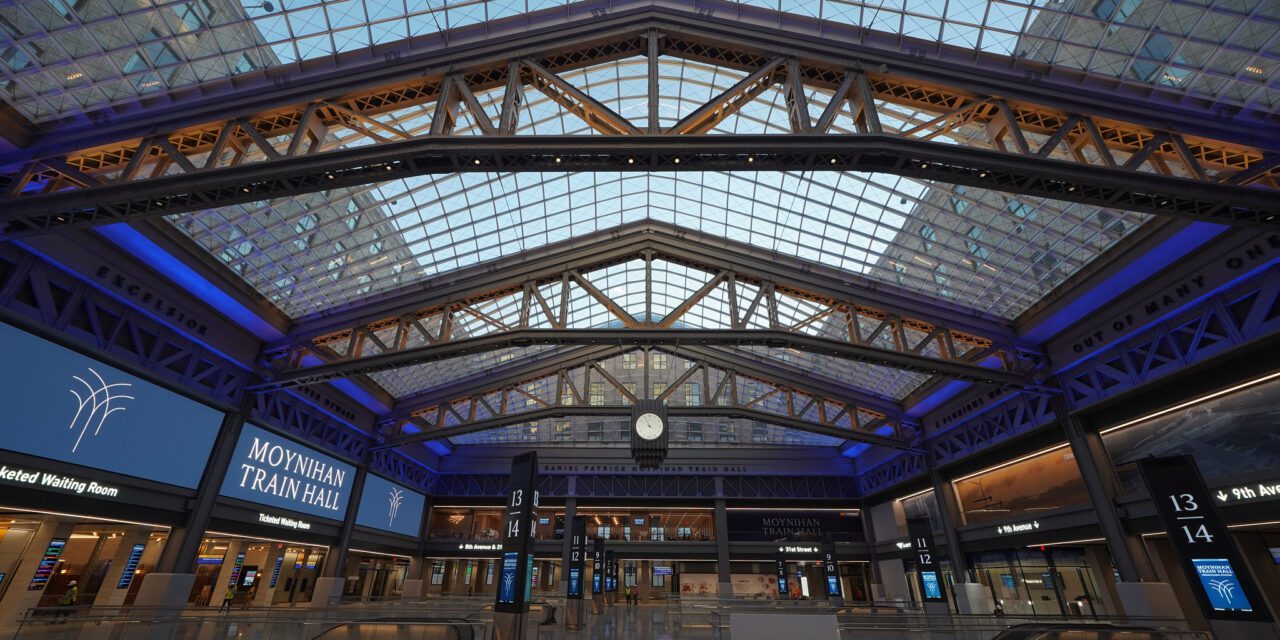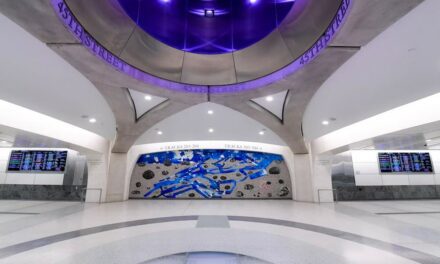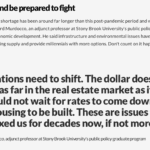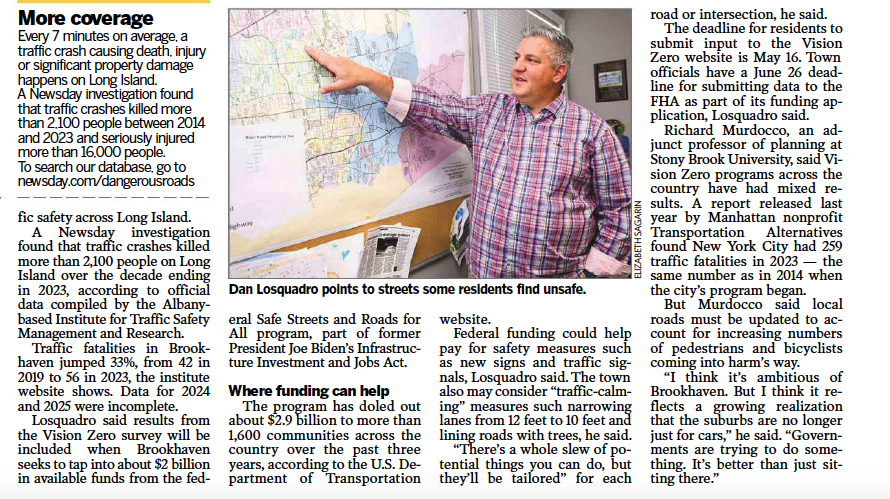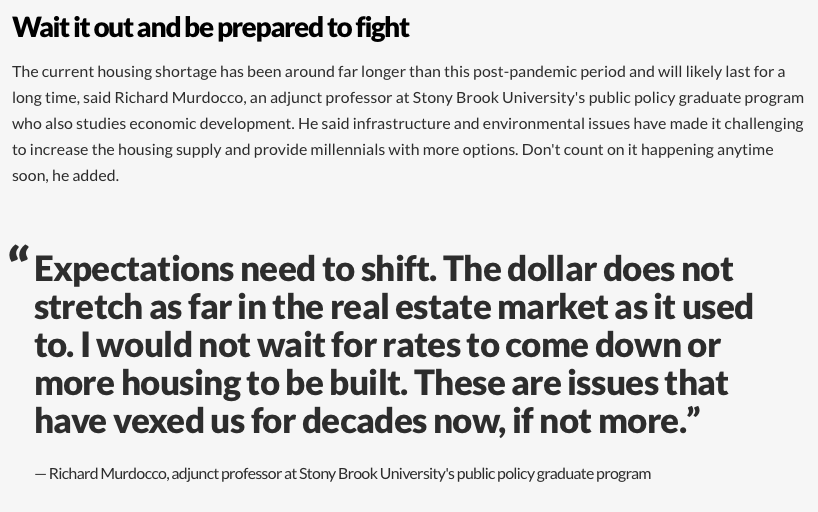The following was exclusively published by The Foggiest Idea on December 31st, 2020. Interested in supporting The Foggiest Idea’s award-winning reporting and analysis? Click here.
By Richard Murdocco
After decades of enduring the cramped, dingy confines of Penn Station, New Yorkers have finally rectified the wanton destruction of McKim, Mead, and White’s original station over half a century ago.
With the grand opening of Moynihan Train Hall, a 255,000-square-foot station that converted the James A. Farley Building into a $1.6 billion transit hub, the sins of yesteryear are (at least partially) absolved in a grandiose fashion. The Farley Building is the architectural sister of Penn Station, built in 1912 by the same team of architects, and sports similar Beaux-Arts flourishes to the station whose demolition in 1963 sparked a national preservation movement.
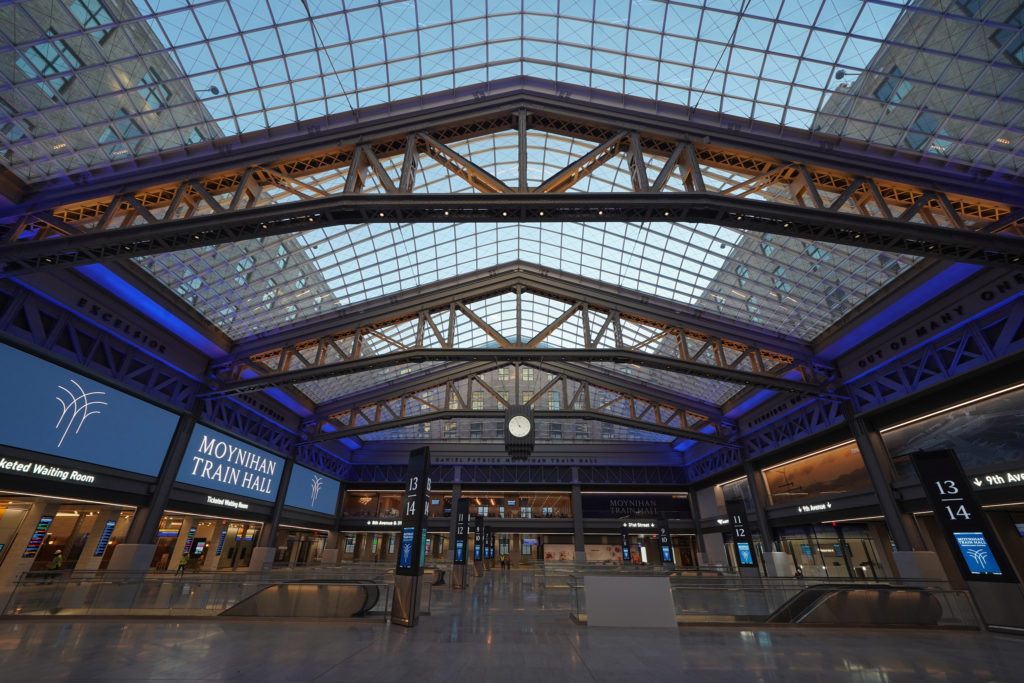
Pictured: The main concourse of Moynihan Train Hall serves as a sweeping correction to the demolition of New York’s original Penn Station. Despite not adding track capacity, the hall does increase the station’s passenger concourse space by 50 percent. (Photo Credit: NYS Governor Andrew Cuomo’s Office)
Adorned with art installations sourced by a global collection of famous artists, the new train hall is the polar opposite of the current Penn Station that sits hunched beneath Madison Square Garden. While that Penn Station is dark and dreary, the new Moynihan Train Hall is clad in Tennessee marble and nuanced details that echo what once stood across the street.
Thanks to a 92-foot-high glass atrium that extends across an acre of public space, natural sunlight drenches into a concourse that leads travelers to 12 of Penn Station’s 21 tracks. While the project does not add capacity to the nation’s busiest train station, it does provide the necessary underpinnings for additional improvements that will do so, with policymakers aiming for improvements by 2028.
Plus, it’s a far prettier destination for tourists and commuters alike.
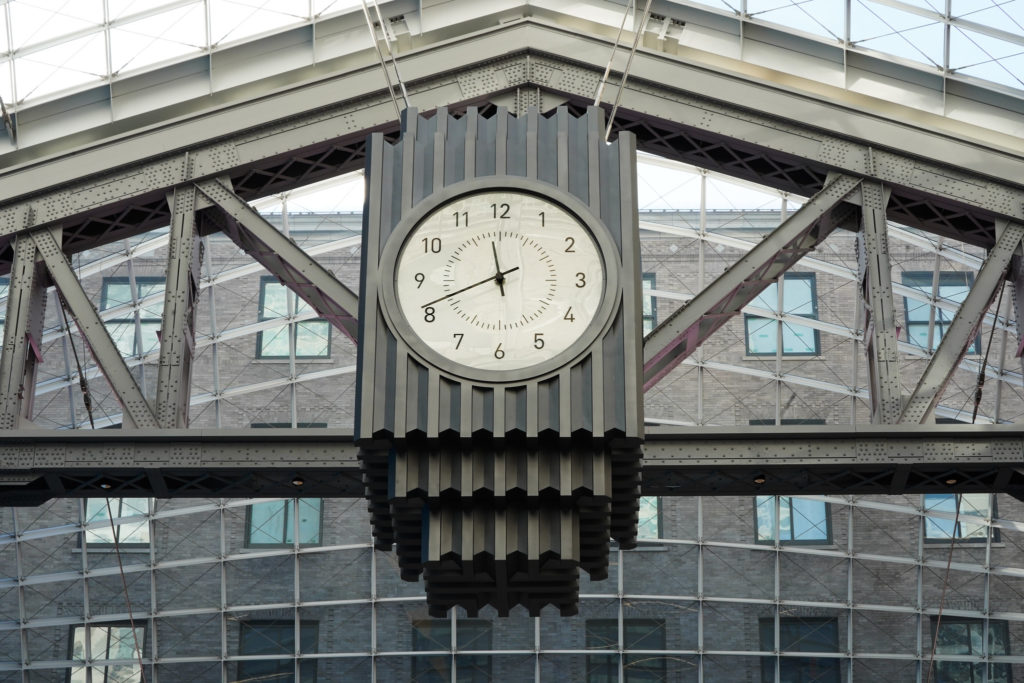
Pictured: The clock in Moynihan Train Hall, which is nearly 12 feet tall and more than 6 feet wide, was designed by Peter Pennoyer Architects, and serves as a focal point for the concourse. (Photo Credit: NYS Governor Cuomo’s Office)
High-profile tenants are already moving into the newly minted offices in the building, and the famous post office known by New Yorkers for having later-than-normal hours will remain open. Recently, Facebook announced they would lease 730,000 square feet in the building.
The hall is named after former U.S. Senator Patrick Moynihan, who served as New York’s senator from 1977 to 2001 and fiercely advocated for the conversion of the Farley Post Office into a transit hub from the early 1990’s to his death in 2003. While the project was in the works in various stages for nearly 30 years, construction formally began in 2017 after a concerted push from New York State Governor Andrew Cuomo.
“Senator Daniel Patrick Moynihan was a man of true vision,” Cuomo said during the hall’s ribbon cutting ceremony. “He saw the potential in an underutilized post office and knew that if done correctly, this facility could not only give New York the transit hub it has long deserved, but serve as a monument to the public itself,” he added, his remarks echoing in the cavernous hall.
“Dad always said the greatest single act of vandalism in the history of New York was the destruction of Penn Station in 1963,” Maura Moynihan, the senator’s daughter, said recently to NY1. “This is really a miracle.”
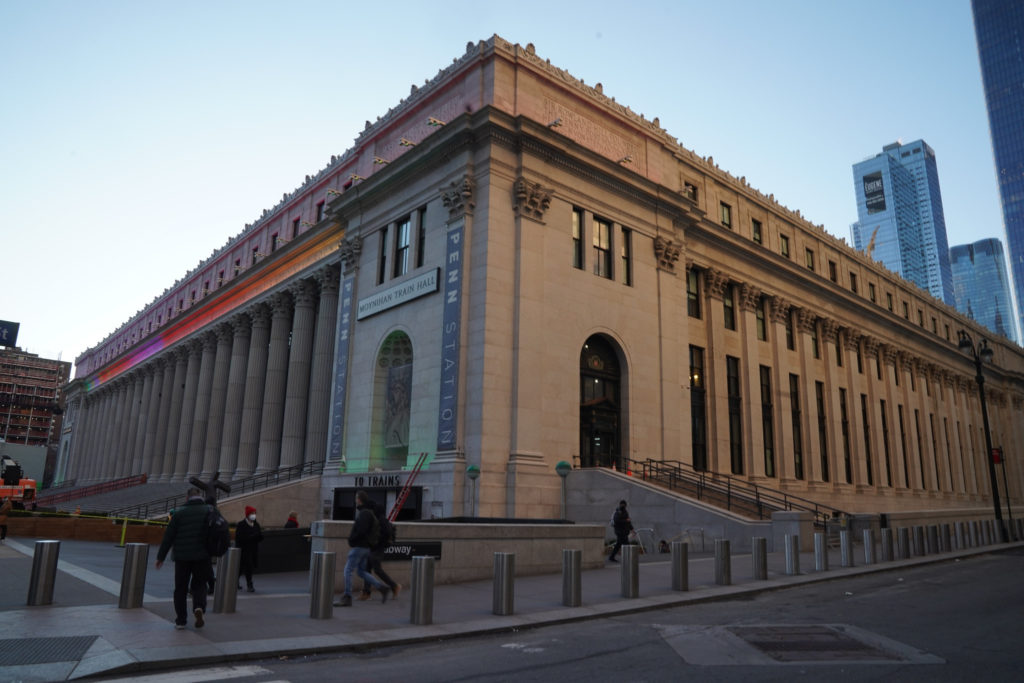
Pictured: The exterior of the James A. Farley building once mirrored neighboring Penn Station, which was demolished by the cash-strapped Pennsylvania Railroad in 1963. (Photo Credit: NYS Governor Andrew Cuomo’s Office)
The halls’ $1.6 billion total price tag is a conglomeration of federal, state, and private funding.
According to reports in Newsday, $550 million of the total sum comes from New York’s state budget, the Metropolitan Transportation Authority kicked in another $100 million, $105 million is from Amtrak, the Port Authority of New York & New Jersey contributed $150 million, the project received $62 million in federal grants. There’s also a $630 million investment from private developers, including a $400 million federal loan.
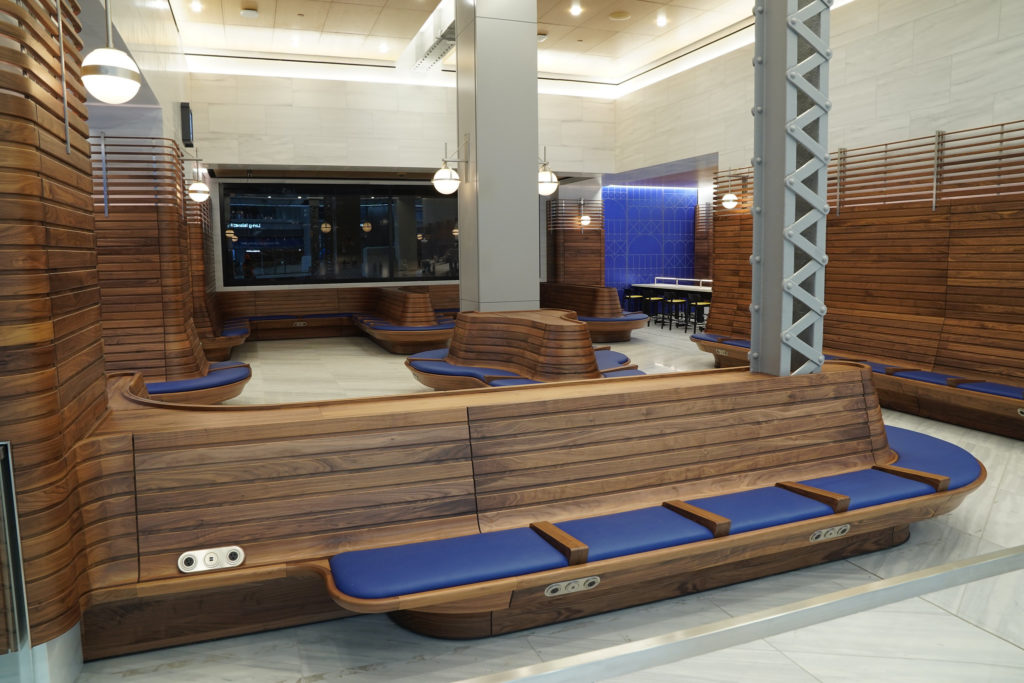
Pictured: According to the New York Times, Moynihan’s new waiting area for ticketed passengers was inspired by the wooden seating and globe fixtures in the old Penn Station. (Photo Credit: NYS Governor Andrew Cuomo’s Office)
The Governor also announced the opening of a new entrance to Penn at 33rd Street and 7th Avenue, which grants LIRR commuters more access.
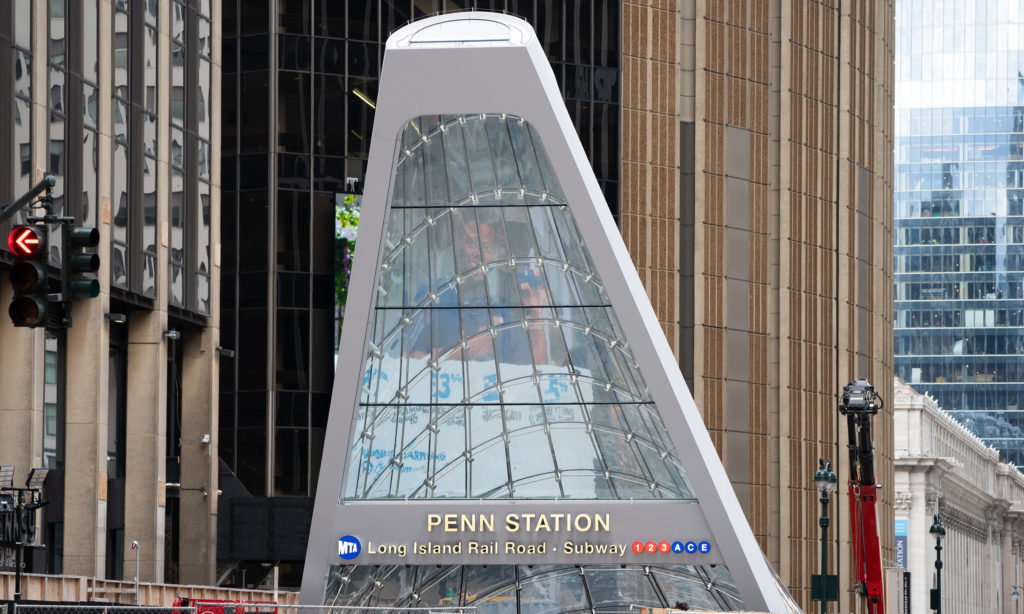
Pictured: The newly-minted East End Gateway and Long Island Rail Road (LIRR) Concourse
Entrance 33rd Street and Seventh Ave. (Photo Credit: NYS Governor Cuomo’s Office)
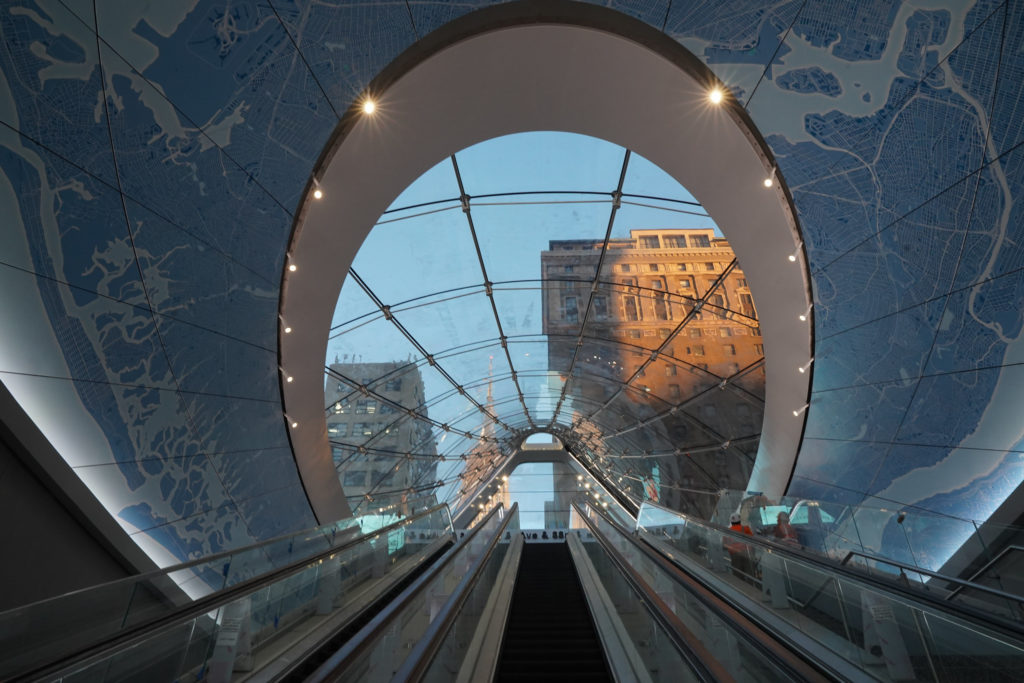
Pictured: The new concourse entrance at 33rd Street effectively doubles the ingress and egress between the street level and the existing Penn Station’s LIRR Concourse and includes three new escalators and a staircase. (Photo Credit: NYS Governor Cuomo’s Office)
To Cuomo, the successful conversion of Farley into the modern-day successor to Penn Station is a testament to New York’s strength. “We built this as a statement of who we are, and who we aspire to be,” the governor said. “Is it grand? Yes. Is it bold? Yes, because that is the spirit of New York and that is the statement we want to make to our visitors, to our children and to future generations. As dark as 2020 has been, this new hall will bring the light, literally and figuratively, for everyone who visits this great city.”

